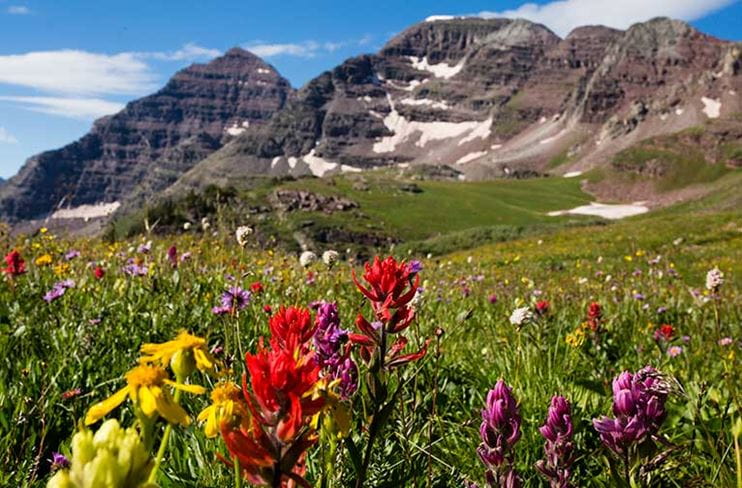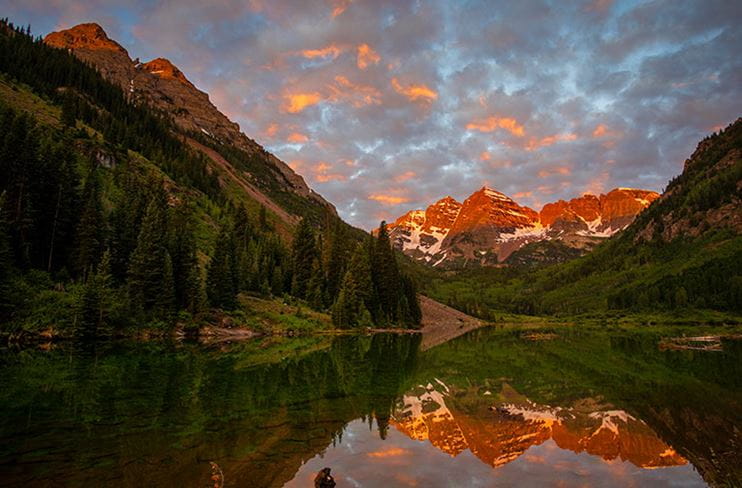How A Dose Of Nature Improves Your Well-Being
...and where to go around Aspen Snowmass to get a healing fix.

By Catherine Lutz
September 2022
At the end of a long work day (or any day, for that matter), folks around here like to get outside. Whether it’s a trail run up Hunter Creek, cross-country skiing on the Rio Grande Trail, or even a stroll on the paved path to the park with the dog or into town for errands, we can feel the stress and burden of responsibilities melting away as soon as we start inhaling fresh air, listening to leaves rustling in the trees, or watching the sky change color as the sun sets. True, we’re often happiest on a camping trip or after a long ski day (preferably with a couple Bowl laps), but sometimes just sitting on the front stoop under the aspen trees does the trick.
And it’s not just those of us lucky enough to spend time in this beautiful place. Science confirms that a dose of nature is linked to positive emotions and a sense of well-being—for everyone. There have been dozens of studies and extensive research on the topic. In a 2019 study of 20,000 people led by a team at the University of Exeter, people were much more likely to report positive health and psychological well-being after spending two hours per week in natural environments (including parks). Whether in one block of time or spread out across the week, two hours was the minimum, and peak well-being was achieved between 200 and 300 minutes, the study found.
A multitude of benefits can be reaped from spending time outdoors and feeling connected to nature, according to an April 2020 article in the American Psychological Association’s Monitor on Psychology that cites multiple sources. University of Chicago psychologists, for example, combed the scientific literature to find that experiences in nature have cognitive benefits including memory improvement and attention control — possibly because non-threatening natural experiences reduce stress and thus free up the brain’s energy, or because as natural beings by evolution we are innately connected with nature.
Another research review cited by the article led a University of Washington team to conclude that contact with nature increases happiness, well-being, positive social interactions, and even a sense of purpose in life. And while time spent outside has a stronger impact, researchers found that even images or videos of nature result in positive emotions.
Time in nature might even make people nicer to others, according to two experiments cited by the article. A possible explanation? Awe.
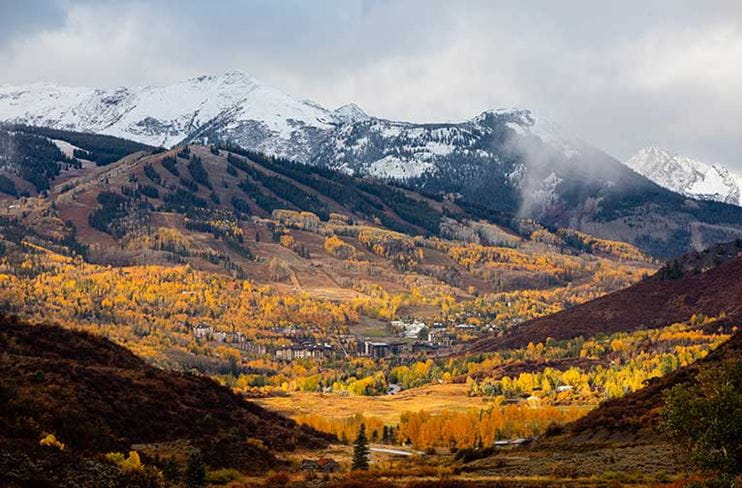
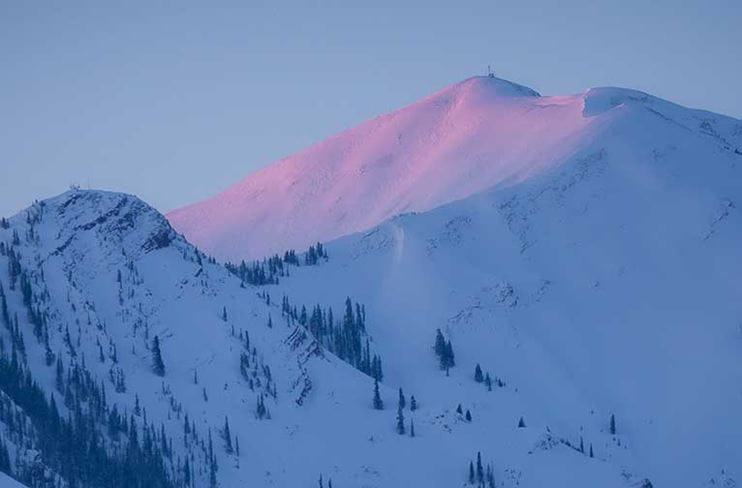
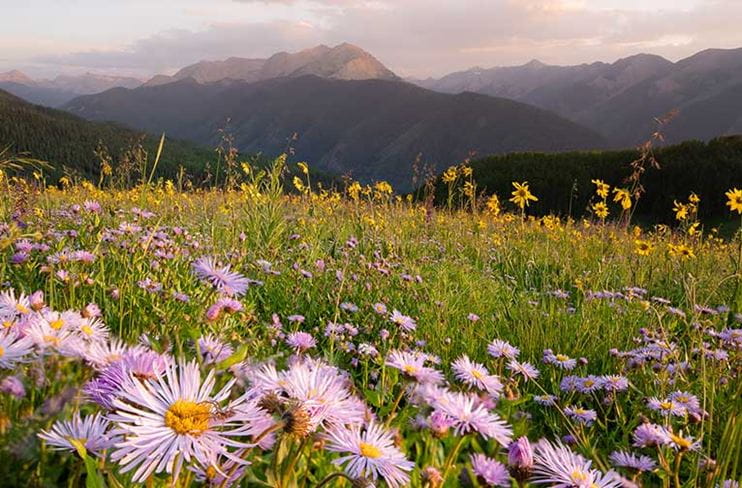
“There are some hints that awe is associated with generosity, and nature can be a way to induce awe,” Carleton University Professor John Zelenski, who led the experiments, was quoted as saying in the article. Last but not least, a study published in the September 2022 issue of Molecular Psychiatry is the first to prove a causal link between nature and positive brain health, according to the head of the organization that conducted the study. Through MRI activity, researchers found that after a one-hour walk in nature, activity in the amygdala decreased—thus lowering stress—while a one-hour city walk did not.
Luckily in Aspen and Snowmass, we have seemingly unlimited ways to get out into nature. From quiet spots perfect for a Zen moment to paths leading to jaw-dropping views or remote settings reached only by heart-pounding commitment, there are countless options for people of all ages, abilities, and tastes to feel that connection with the great outdoors—and improve well-being at the same time. Here we share some of our favorites for a mix of seasons and abilities.
Peaceful Moments
Steal away for a half hour (or more, or less) at the Aspen Center for Environmental Studies’ Hallam Lake Preserve, a 25-acre oasis, free and open to the public year-round, where you can wander a short loop trail, watch for local wildlife, or just sit in quiet contemplation.
Drive, walk, or bike to the wildlife viewing platform overlooking the North Star Nature Preserve east of Aspen, where you might spot deer, moose, beavers, and geese on or near the winding Roaring Fork River and a plethora of bird life—including osprey, golden eagles, great blue heron, swallows, and warblers—above it.
The Aspen Meadows campus (home of the Aspen Institute, Aspen Music Festival structures, and Aspen Meadows Resort) is situated on 40 acres of meadows, sage grasslands, and aspen groves. The Herbert Bayer-designed campus includes Anderson Park, where grassy mounds, a pond, and a stream (along with a few strategically placed benches) invite contemplation, offer a panoramic view of the ski mountains, and embody the Aspen Idea of cultivating mind, body, and spirit.
When walking, biking, or cross-country skiing the wide, flat, and popular Rio Grande Trail, wander off on any one of several trail spurs for some quiet moments, or, in deep winter, simply stop to observe the artistic ice formations on the Roaring Fork River.
In Snowmass, the hike-only Mayfly Trail, just down-valley of the Snowmass Center, offers a half-mile of idyllic natural spots alongside burbling Brush Creek when you’re in need of a quick getaway.
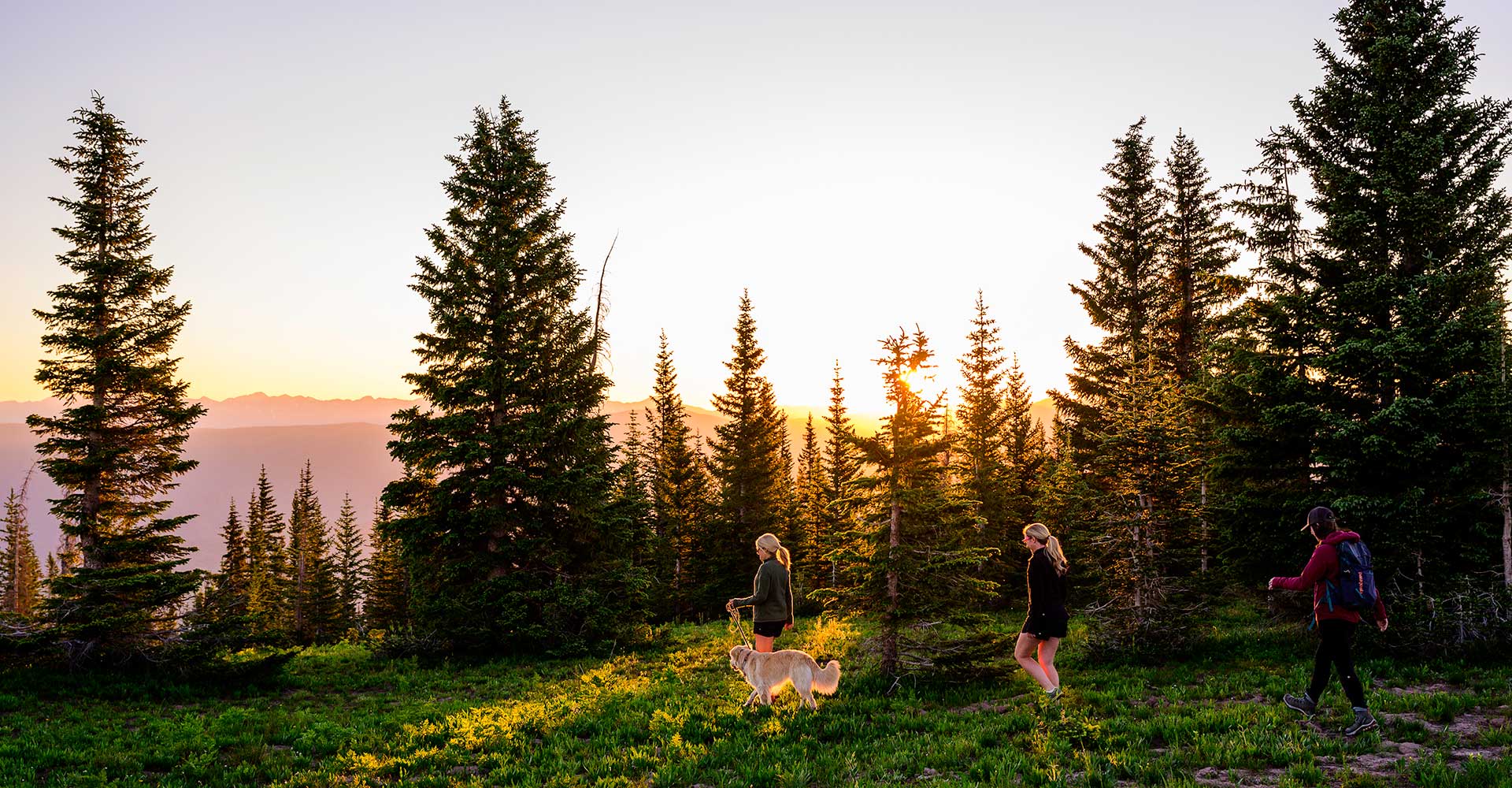
Three friends hiking on Snowmass Mountain at dawn
Views and Vistas
The top of Buttermilk Mountain offers one of the best views from any ski area in Colorado—of dramatic, 14,025-foot Pyramid Peak at the head of the glacier-carved Maroon Creek Valley—and a range of options, ranging from easy to hard, for getting there. In winter, simply ride any of Buttermilk’s three base-to-summit chairlifts, or skin up on your own power; hike or bike it in summer and fall.
At the peak of fall colors (usually late September or early October), don’t miss a hike or mountain bike ride along Snowmass’s Tom Blake Trail, a mesmerizing journey through huge aspen groves that the light can turn to every shade from pale, peaceful yellow and majestic gold to deep fiery orange. The drive to the trailhead, whether from Owl Creek Road or Brush Creek Road, can be nearly as impressive.
Dance from one side of the Continental Divide to the other on 12,095-foot Independence Pass, 20 miles east of Aspen on Highway 82. Open to vehicle traffic from late May through October, this high point, plus even higher points around it—which can be reached on foot or by skinning–offers sweeping panoramic views and endless games of Name that Peak (see if you can spot the Maroon Bells, for example).
One of most postcard-worthy views of Aspen Mountain can be found at a pullout on Hunter Creek Road, partway up Red Mountain. (A short hike up from the nearby Hunter Creek Trail parking lot or longer grunt up Smuggler affords similar views.) Study your lines if you’re an avid Aspen Mountain skier, or turn your gaze westward to equally impressive views of Highlands, Tiehack, and Mount Sopris in the distance.
From the Aspen Cross Country Center (the municipal golf course in the summer), it’s only a few glides on skinny skis to get an impressive view of Aspen Highlands and Buttermilk ski areas, with Pyramid Peak framed in between if in the right spot, and some satisfying exercise to boot.
It’s hard to think of a better vista of the Brush Creek Valley and Snowmass—framed by white-striped Mount Daly—than the one from McLain Flats Road. Just be sure you’re a passenger in a vehicle or on a road bike, as there are no viewing pullouts on this at-times busy country road.
On his one and only visit to Colorado in 1949, philosopher Albert Schweitzer said Aspen “is built a little too close to heaven.” On a dark night in one of several potentially very dark spots—among them the Maroon Bells Scenic Area, the top of Aspen Mountain, or any place even slightly outside of town—turn your gaze upward and watch the stars twinkle brightly against the deep inky canvas, and ponder your own place in the universe.
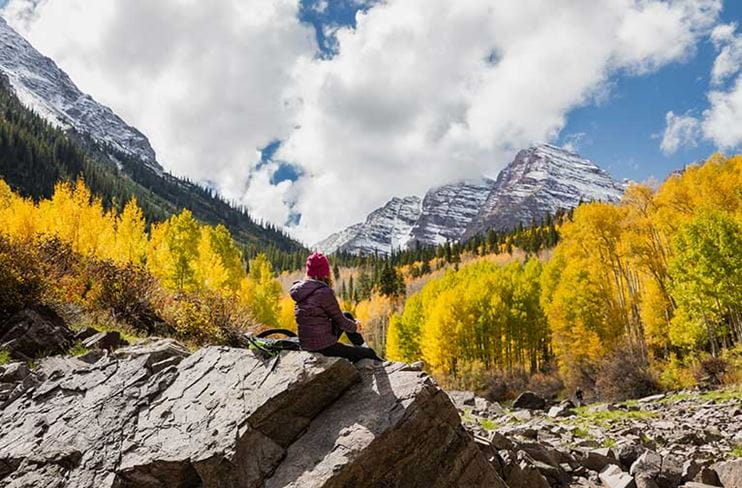
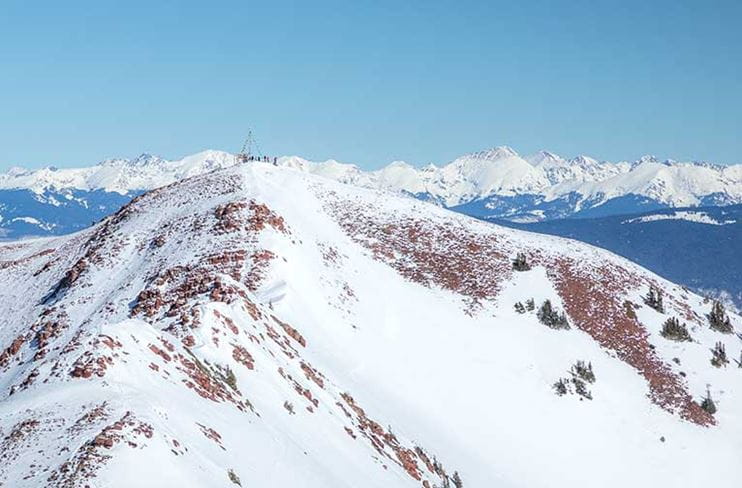
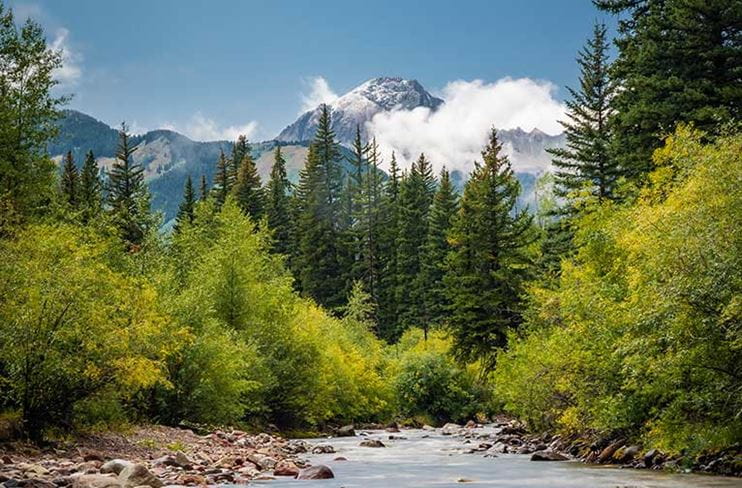
Heart-Pounding Exercise
Ascending a glacier-carved, hanging valley, the Hunter Creek Trail is one of the area’s most popular—but continue (on foot, mountain bike, or cross-country skis) to the upper stretches of the trail (past the turnoffs toward Smuggler Mountain and across the creek) and you’ll be rewarded with more serenity, jaw-dropping views back down the valley, and almost magical surroundings in what’s clearly a very special place.
With views around every bend and rolling smooth singletrack, the Rim Trail in Snowmass is a local classic hike or bike ride from spring through fall. The nearly 8-mile trail traversing the west and north rims of the Brush Creek Valley is split into two nearly equal sections; for a very Zen moment and one of several spectacular views, visit the marble platform with a yin-yang at its center, just off the top of Rim Trail South.
It's a 9-mile, gentle-but-long ascent up the Conundrum Creek Trail to Conundrum Hot Springs, a popular and now permitted overnight camping area. Do it as a long day hike, however, and you could get the springs to yourself, enjoying a soothing soak with beautiful views after backpackers have left or before they’ve arrived.
Many a hiking trail in the area leads to spectacularly hued alpine lakes, and two such trails up the Castle Creek Valley are among the most awe-inspiring. Both the Cathedral Lake Trail and the American Lake Trail climb over 2,000 vertical feet (5.4 and 6.8 miles out and back, respectively) to snowmelt-clean, mesmerizing bodies of water, perfect for sitting on the shores and resting, rejuvenating, and immersing oneself in natural splendor.
